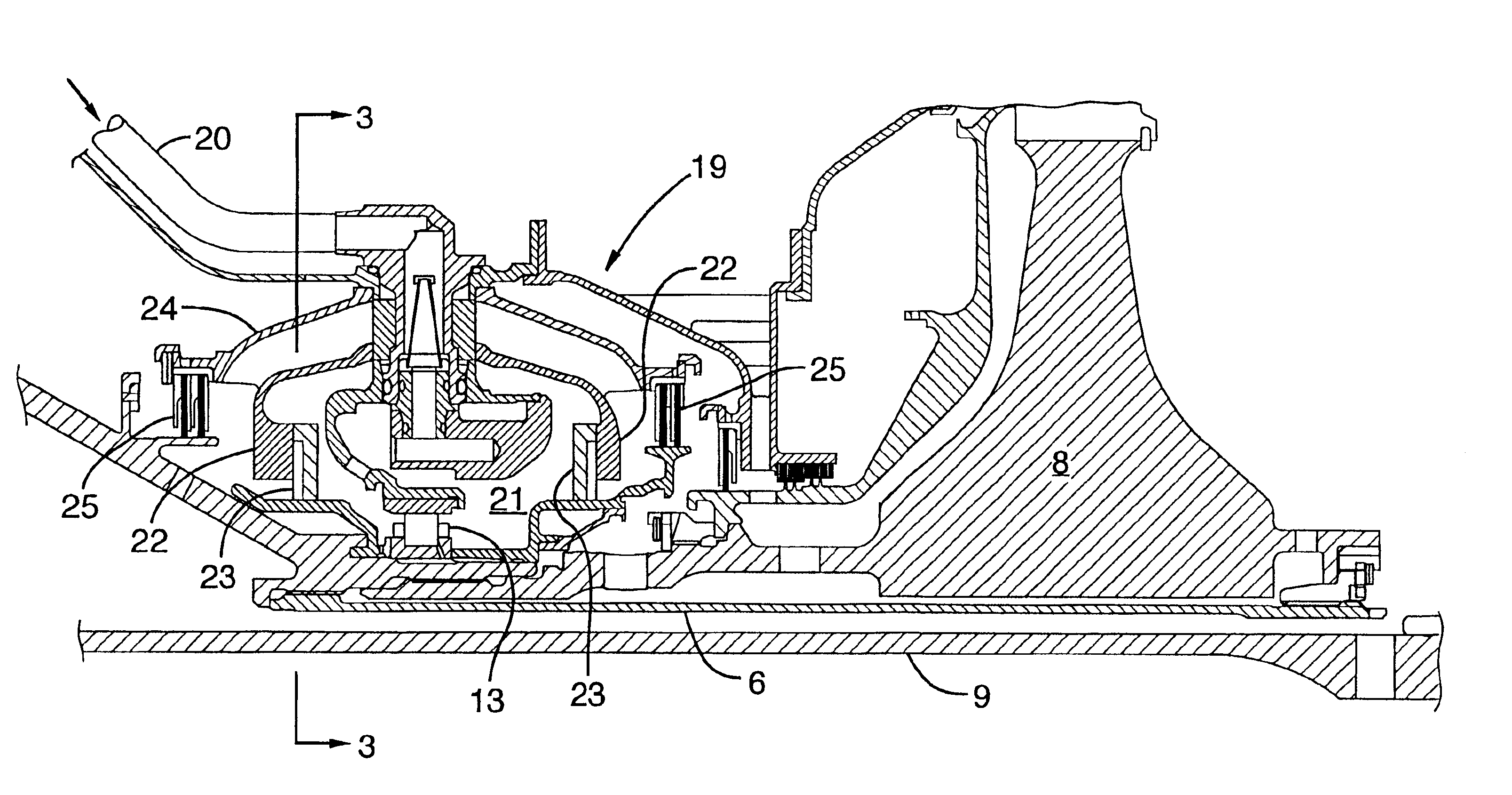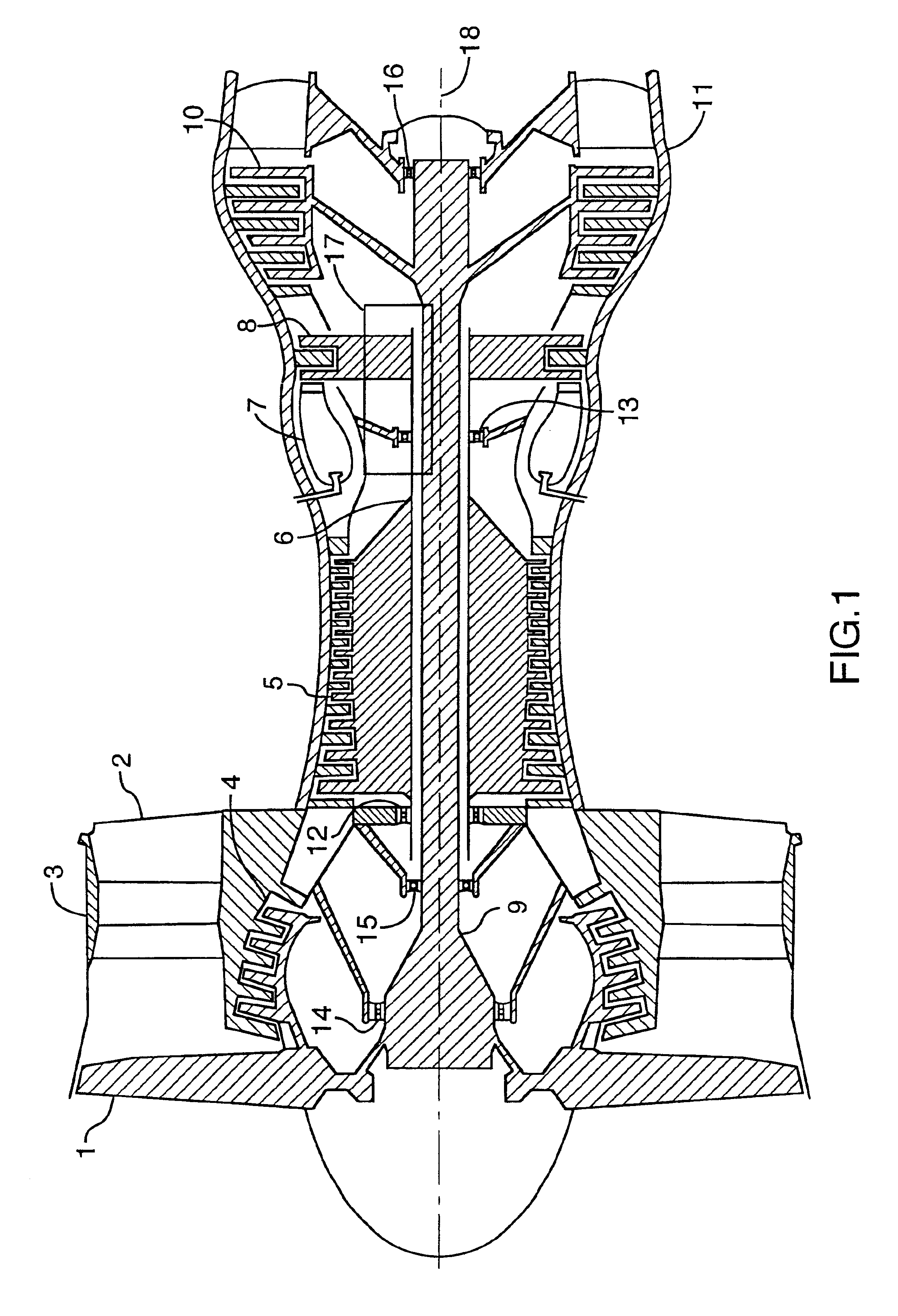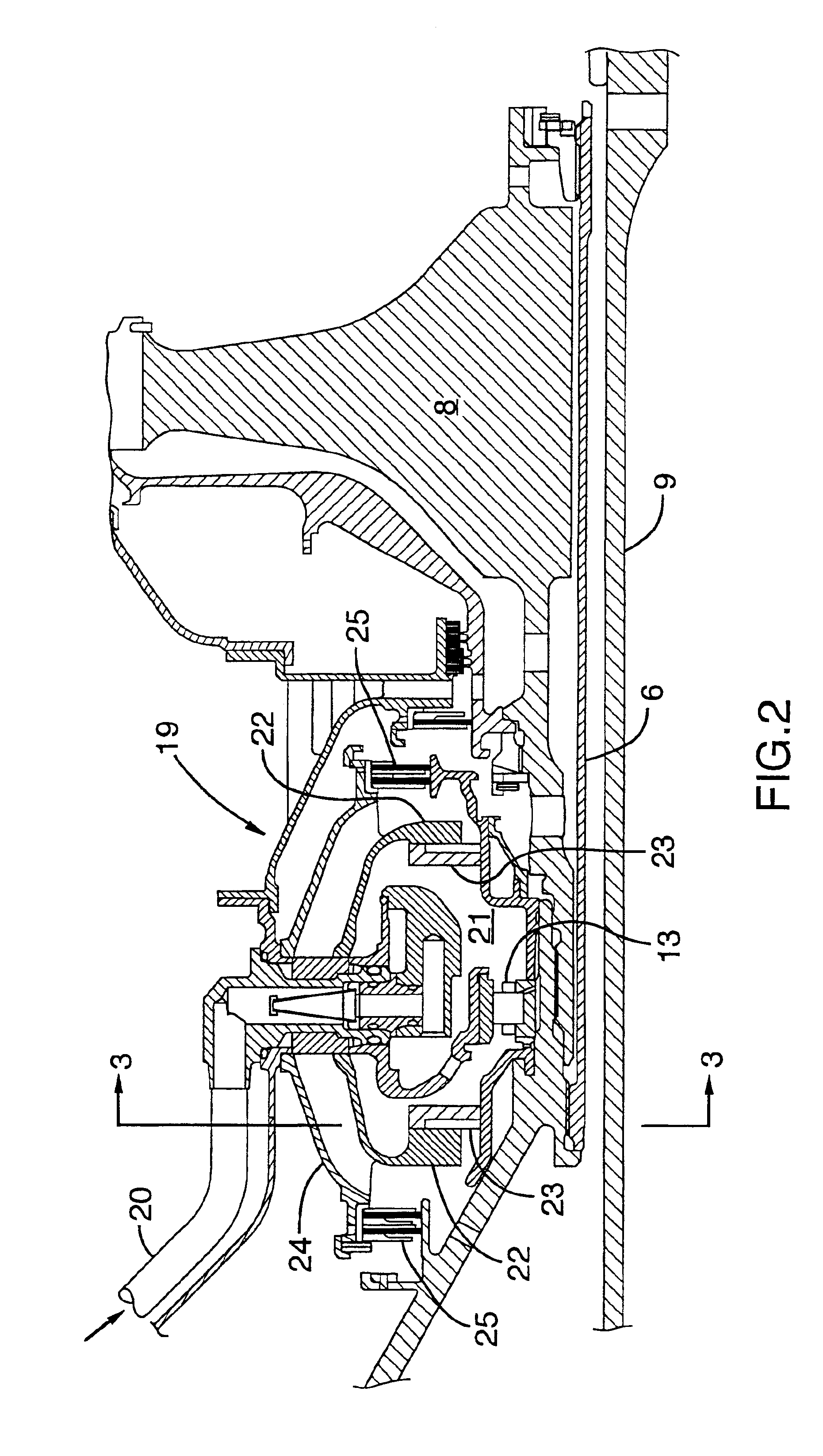Method and device for minimizing oil consumption in a gas turbine engine
a gas turbine engine and oil consumption technology, which is applied in the direction of liquid fuel engines, machines/engines, mechanical equipment, etc., can solve the problems of increasing the level of engine emissions, affecting the performance of the engine, and inevitably consuming a portion of conventional design oil, so as to prevent oil leakage, minimize oil consumption, and high density and viscosity
- Summary
- Abstract
- Description
- Claims
- Application Information
AI Technical Summary
Benefits of technology
Problems solved by technology
Method used
Image
Examples
Embodiment Construction
FIG. 1 shows a longitudinal cross-sectional view through an example gas turbine engine. Air passes through the engine (from left to right as drawn) first passing fan 1 and then splitting into two flows of air. An outer portion of the air flow passes through the bypass duct 2 formed by the annular fan case 3 and an inner portion passes through the engine core past low pressure compressor blade 4. In the example shown, the engine includes an axial high pressure compressor 5 mounted to a high pressure shaft 6 and driven by hot gas passing from combustor 7 over high pressure turbine rotors 8. The fan 1 and low pressure compressor 4 are mounted to a low pressure shaft 9 driven by low pressure turbine rotors 10. As seen in FIG. 1, the high pressure shaft 6 is supported on forward bearings 12 and rearward bearings 13. In a like manner, the low pressure shaft 9 is supported on three bearings 14, 15 and 16.
Of particular interest to the present invention are the bearing cavities which surroun...
PUM
 Login to View More
Login to View More Abstract
Description
Claims
Application Information
 Login to View More
Login to View More - R&D
- Intellectual Property
- Life Sciences
- Materials
- Tech Scout
- Unparalleled Data Quality
- Higher Quality Content
- 60% Fewer Hallucinations
Browse by: Latest US Patents, China's latest patents, Technical Efficacy Thesaurus, Application Domain, Technology Topic, Popular Technical Reports.
© 2025 PatSnap. All rights reserved.Legal|Privacy policy|Modern Slavery Act Transparency Statement|Sitemap|About US| Contact US: help@patsnap.com



